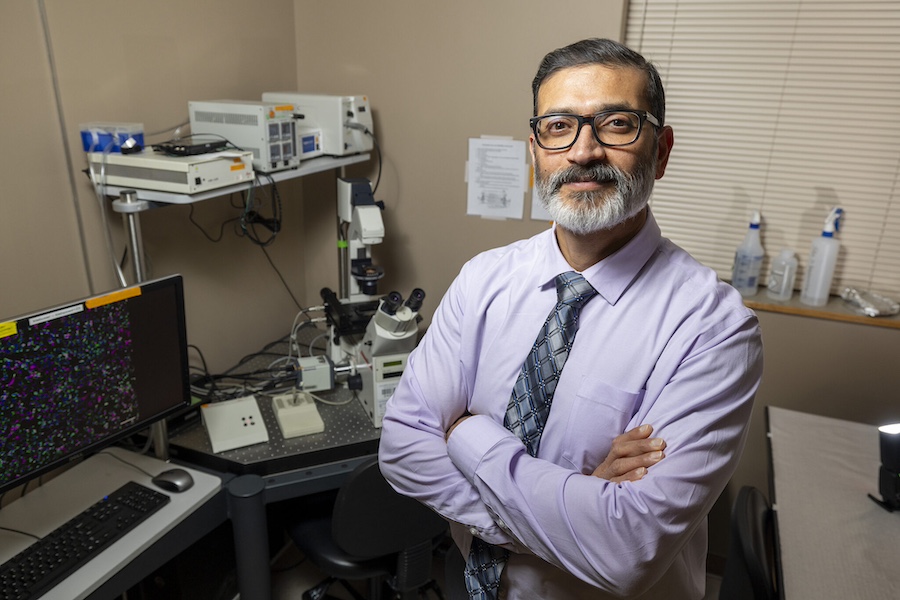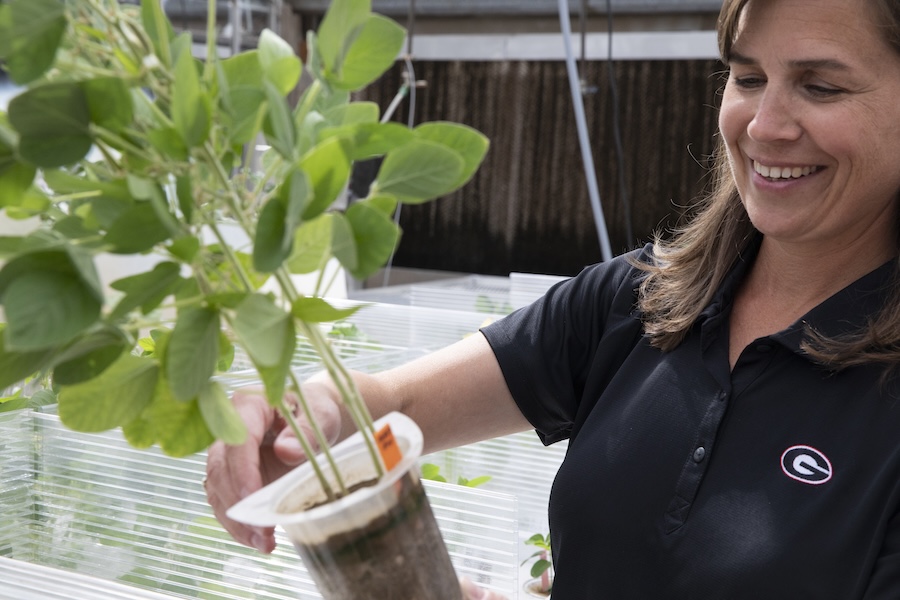By Cat Holmes
University of Georgia
"The same gene exists in males, but it doesn't do the same thing," said Sammy Aggrey, the quantitative and molecular geneticist in the UGA poultry science department who found the growth hormone receptor gene. "Some genes work in one gender and not in another."
Identifying the growth hormone receptor gene in chickens and understanding how it works could have important implications for human research.
Obesity is growing at epidemic proportions in the United States. According to the Centers for Disease Control and Prevention, more than 44 million Americans are now obese, an increase of 74 percent since 1991.
Humans and chickens are enough alike that Aggrey's discovery and other genetic research on chickens may lead scientists to similar findings in humans.
"One of the beauties of using chickens is that the research can be done quickly," Aggrey said. "Then biomedical researchers can use it right away in their work with humans. When we find genes in chickens that act in a certain way, we expect to find the same types of genes in humans."
Aggrey said it's wrong, though, to call the growth hormone receptor gene a "fat gene" or a "female fat gene."
"Many people think that if you pinpoint a gene like this, you can simply manipulate the gene to gain or lose weight. It's not that simple," Aggrey said. "Behavior and the environment, non- genetic factors like nutrition and activity level, play large roles."
How can a gene express itself in females but not in males?
The reasons are complex, Aggrey said. But they boil down to this: While both sexes have most genes in common, genes located on the sex chromosome differ. Often, as in humans and chickens, one gender has a single copy of that gene and the other has a double copy of it. This causes the gene to take different actions in each sex.
Aggrey is also involved in a larger obesity-related study to identify and map all the genes involved in growth and fatness in broiler chickens.
For this project, he works with researchers at the universities of Delaware and Maryland and the National Institute for Agricultural Research in France. The latter is an agency much like the U.S. Department of Agriculture.
"It's a huge project to identify and characterize that many genes," he said. "Last year we discovered spot 14, which is one gene for fatness." Spot 14 has since been shown to be connected to obesity in humans and mice.
(Cat Holmes is a news editor with the University of Georgia College of Agricultural and Environmental Sciences.)


.jpg)



